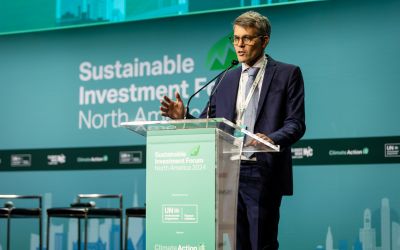Industry’s hopes of geo-engineering climate offsets dashed by findings
Artificial ‘geo-engineering’ of the atmosphere advocated by experts and companies hoping to use it as an offsetting tool, has been scrutinised by scientists. They conclude it is no way to slow climate change and could potentially lead to shortages in food and water supplies.

 Artificial ‘geo-engineering’ of the atmosphere advocated by experts and companies hoping to use it as an offsetting tool, has been scrutinised by scientists. They conclude it is no way to slow climate change and could potentially lead to shortages in food and water supplies.
Artificial ‘geo-engineering’ of the atmosphere advocated by experts and companies hoping to use it as an offsetting tool, has been scrutinised by scientists. They conclude it is no way to slow climate change and could potentially lead to shortages in food and water supplies.
The Nobel winning Chemist, Professor Paul Crutzen, shot to global prominence with his scientific paper in 2006 advocating an "escape route" by artificially "geo-engineering" the atmosphere to counter C02 emissions. Crutzen attended the European Parliament in December 2010, at a seminar on the future of oil, where he confirmed his commitment to the geo-engineering movement.
"We could release particles of sulphur (to deflect sunlight and heat) in the upper atmosphere to cool the global climate,” he said.
However a section of Atmospheric Science Letters published in January 2011 indicates this approach is by no means a panacea for climate change.
Ben Kravitz, from Rutgers University, evaluated the effects of stratospheric geo-engineering with sulfate aerosols, and found that although it is inexpensive, it may have unintended consequences, such as reducing summer monsoon rainfall in Asia and Africa: affecting biodiversity and potentially threatening the food and water supply for billions of people.
Other studies also suggest the approach could produce dangerous cascade effects, severely disrupting weather and agriculture, and might fail to ease warming anyway. climate modeller Olivier Boucher of the British Met Office says that cooling effects would not be uniform, and this would likely intensify greenhouse-induced drying in the Amazon, threatening biodiversity, as well as the rainforest’s intake of CO2.
A new study by Dr Peter Braesicke, from the Centre for Atmospheric Science at Cambridge University, looks at the possible impacts of sun dimming – known as global dimming – and how it would affect the planet’s wider climate systems.
Braesicke’s study found that solar dimming affects the global climate’s teleconnections – whereby climate patterns are interconnected over very large distances: such as the link between sea-level pressure at Tahiti and Darwin, Australia, which defines the Southern Oscillation. The impacts of dimming could affect the predictability of weather regimes, indicate the findings.
“We have shown that important teleconnections are likely to change in such a geo-engineered future, due to chemistry-climate interactions and in particular, due to changing stratospheric ozone,” stated Braesicke.
A study, led by scientist Caspar Ammann, from the National Centre for Atmospheric Research (NCAR), warns that climates in different regions would respond to geo-engineering in very diverse ways.
“The changes in the Arctic may be so profound in the next couple of decades that trying to ‘fix’ the climate there might turn out to be futile,” Ammann said.
“The ideal solution would be to make sure that there are not as many CO2 emissions. However, this argument has been going on for many, many years and I don't see much progress. So because of this we should basically think about enhancing the cooling effect of these particles,” said Crutzen.
Another geo-engineering approach believed to mitigate the effects of climate change, is fertilising the oceans to boost the growth of tiny plants that soak up greenhouse gases. A UN-backed study showed on Monday (31 January) that this is unlikely to work as anticipated.
The study reduces the idea that iron dust or other nutrients could spur growth of microscopic marine plants and permanently suck carbon dioxide from the atmosphere. Results show that some absorbed carbon simply returns to the atmosphere.
The study also suggests that the extra plants might help fish grow in some areas by providing more food, but might also rob nutrients from other parts of the ocean.
Companies have looked into ocean fertilisation technology, as well as other methods of atmospheric geo-engineering, to offset their operations’ greenhouse gas emissions. Findings indicate that the approaches are unjustifiable because their contribution to mitigating global warming appears small, while inflicting other problems on global society and the environment.
Doug Wallace, lead author of the report at the Leibniz-Institut fur Meereswissenschaften, told Reuters: "In the oceans you have a serious measurement problem." For offsetting, he believes resources are better spent on monitoring and conserving forests, which are more effective in to restoring balance to the climate.
Kravitz and researchers propose a collection of standardised climate modelling experiments, as well as a coordinating framework for performing such experiments, known as the Geoengineering Model Intercomparison Project (GeoMIP).
Author: Marianna Keen | Climate Action
Image: j-dub 1980 | Flickr






